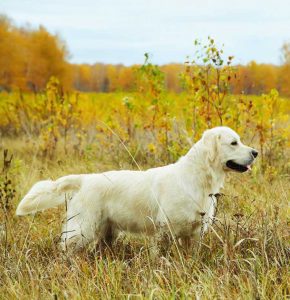 Whether you are a lifelong Nevada resident or just moved to the area with your canine companion, you need to learn how to keep your dog cool during the scorching-hot Nevada summers. The average high temperature in the state in July is 104 degrees Fahrenheit, although it is not unusual for temperatures to reach into the high 90s and low 100s all summer long. You must keep the temperature in mind any time you take your dog outdoors, whether you plan to take them for a long walk or just a quick romp in the back yard.
Whether you are a lifelong Nevada resident or just moved to the area with your canine companion, you need to learn how to keep your dog cool during the scorching-hot Nevada summers. The average high temperature in the state in July is 104 degrees Fahrenheit, although it is not unusual for temperatures to reach into the high 90s and low 100s all summer long. You must keep the temperature in mind any time you take your dog outdoors, whether you plan to take them for a long walk or just a quick romp in the back yard.
Read on to learn how to keep your dog healthy and happy when you live in a state prone to super-high summer temperatures, and to recognize the signs of heatstroke that signal that your dog needs immediate medical treatment.
Some Dogs Are More Prone to Heatstroke
Before you learn about how to prevent canine heatstroke, it is important to recognize that some dogs are more prone to heatstroke than others are. If you just moved to Nevada and are still getting acclimated to the summer heat, realize that your dog is, too – dogs that are not used to high temperatures are more likely to overheat more quickly than those that are used to the heat. Dogs that primarily stay indoors where it is cool also need time to acclimate to outdoor heat.
Dogs who are overweight, elderly, and/or have pre-existing health conditions can overheat more quickly, as can breeds with thick coats. Some dog breeds are also especially susceptible to heatstroke due to their unique airways, coat types, and general breed health concerns. Breeds more prone to heatstroke include:
- Bulldog
- Boxer
- Pug
- Akita
- Cavalier King Charles spaniel
Canine Heatstroke Prevention
Taking steps to prevent canine heatstroke is important, whether your dog is especially prone to it or not. Here are just a few of the ways you can help keep your dog cool and healthy this summer.
- Avoid walking your dog when the temperature is above 90 degrees Fahrenheit. When it is over 90 degrees Fahrenheit, opt for indoor playtime instead of a long walk. If your dog needs to “go potty” when it is hot outside, keep the outing short and in the shade.
- Walk your dog in the early morning and after dusk. If you are not typically an “early bird,” then realize that in Nevada, you may have to become one in the summer if you want to walk your dog before the extreme heat arrives. You can also wait until temperatures drop after dusk to walk your dog.
- Always bring drinking water for your dog on your walks. Stop frequently on your walks to offer your dog cool water.
- Never leave your dog unattended in the heat. Even if there are shady areas in your backyard, never leave your dog outdoors unattended in the summer heat. Also, never leave them in a car alone, no matter how quickly you intend to return.
Signs of Heatstroke in Dogs
Heatstroke in dogs can be deadly, so it is important to seek emergency care for your dog as soon as they begin showing any of the following signs of the condition:
- Vomiting
- Pale gums
- Dizziness
- Excessive panting
- Confusion
- Shaking or seizing
- Rapid heart rate
- Excessive drooling
- Loss of consciousness
Once you notice heatstroke signs, move your dog to a cool area immediately, dampen their coat with a little lukewarm water if possible (water that is too cold can lower their internal temperature too fast, which can also harm them), and if they will, encourage them to take a few sips of water.
This is not an all-inclusive list of canine heatstroke signs, but just a few of the most common ones. In the end, if you know your dog well and they begin to act in a way that seems “strange” to you when they are in the heat, play it safe and take them to Animal Emergency Center for an exam. If your dog is suffering from heatstroke, our staff will work to lower their internal temperature slowly and perform any other steps necessary to return them to good health.
